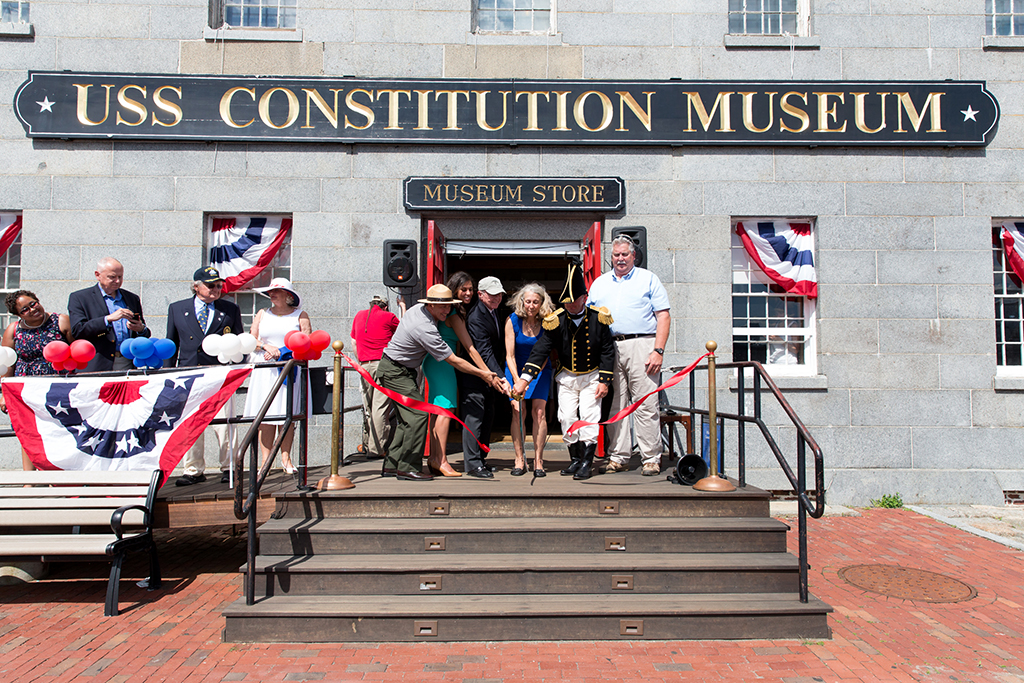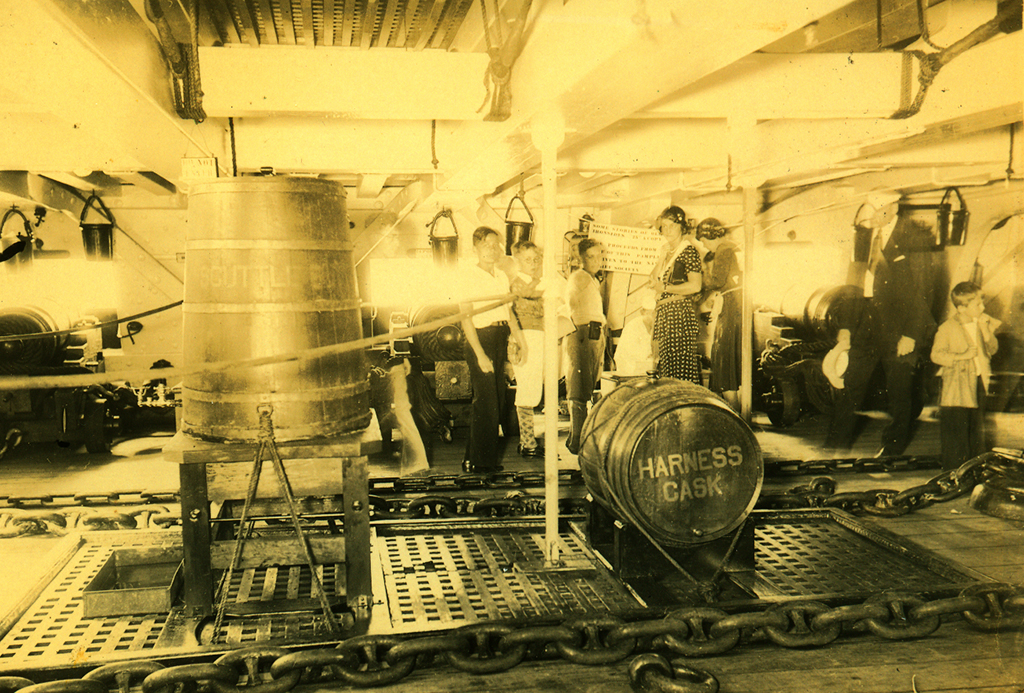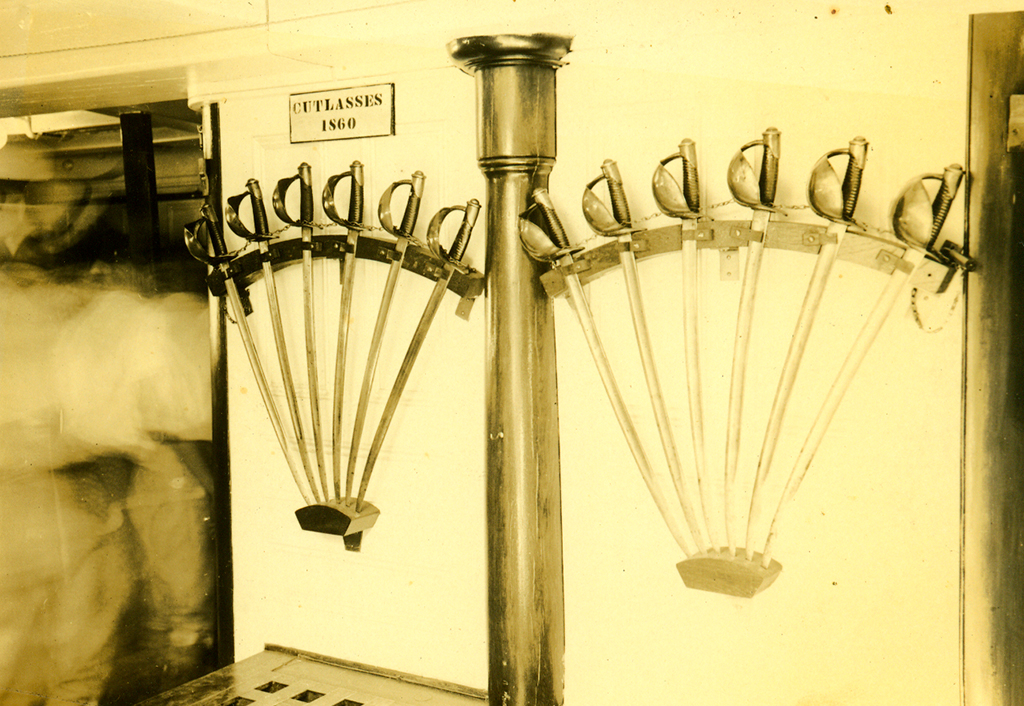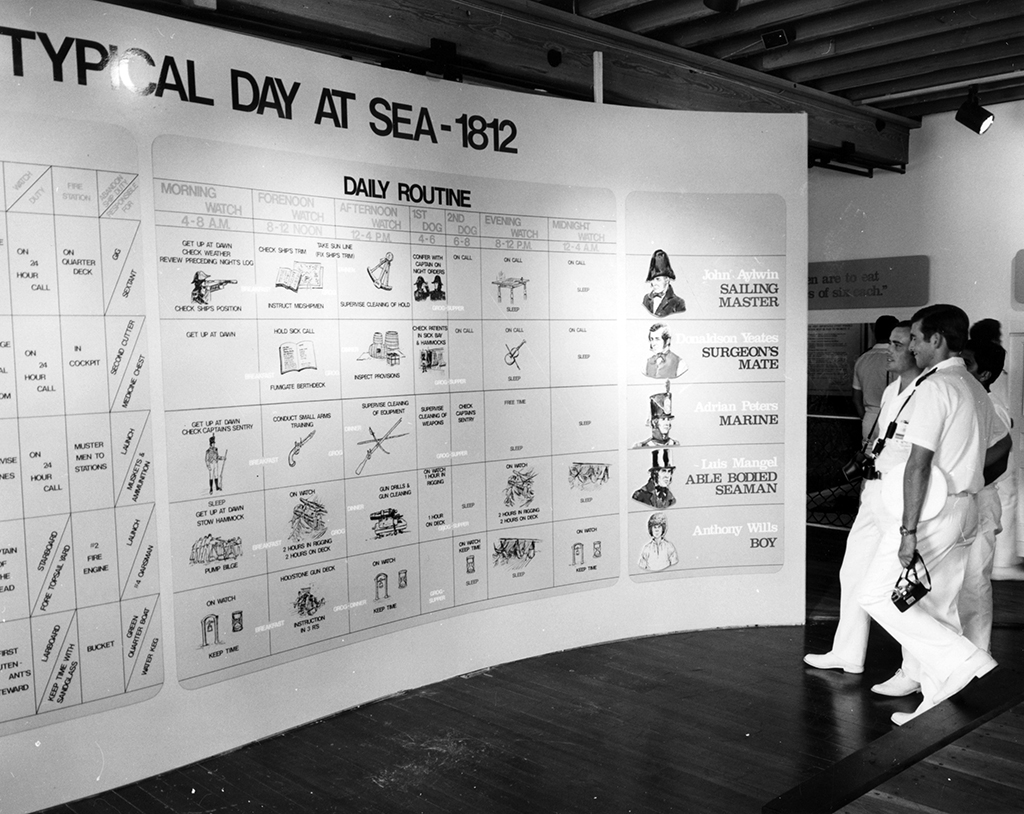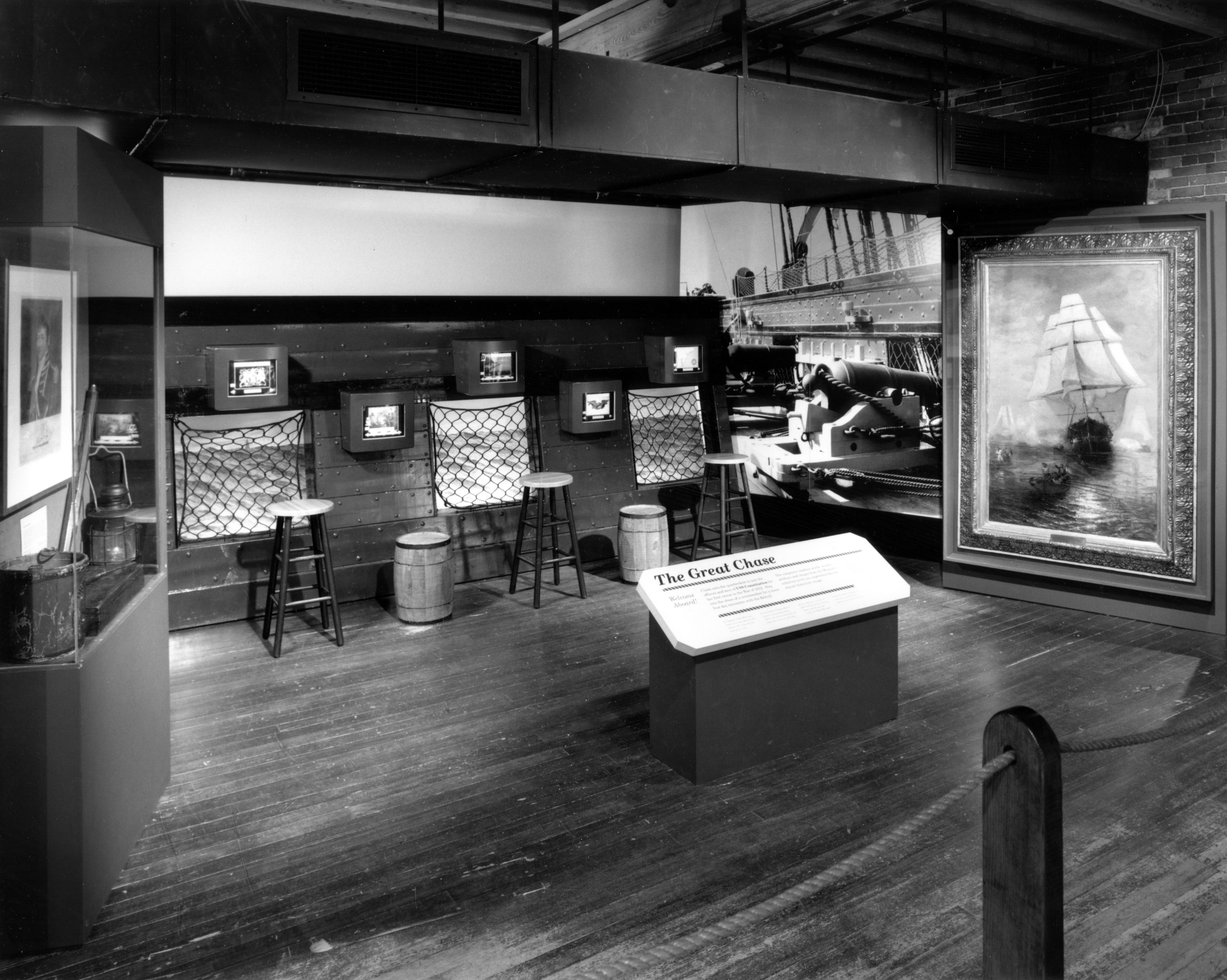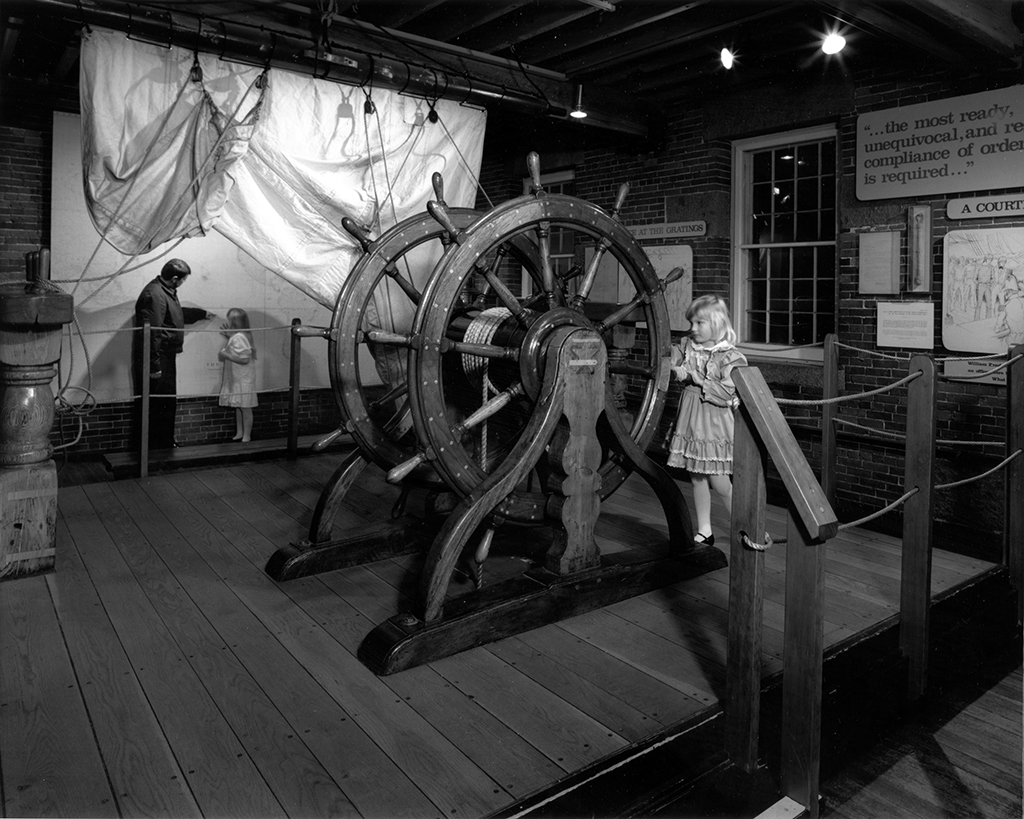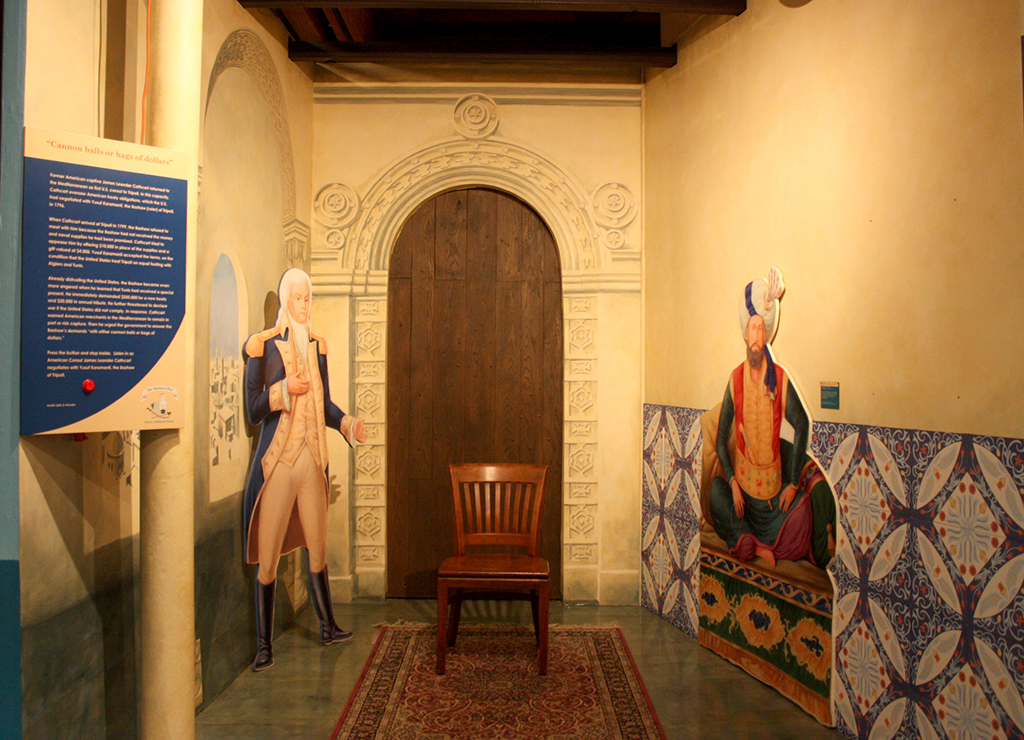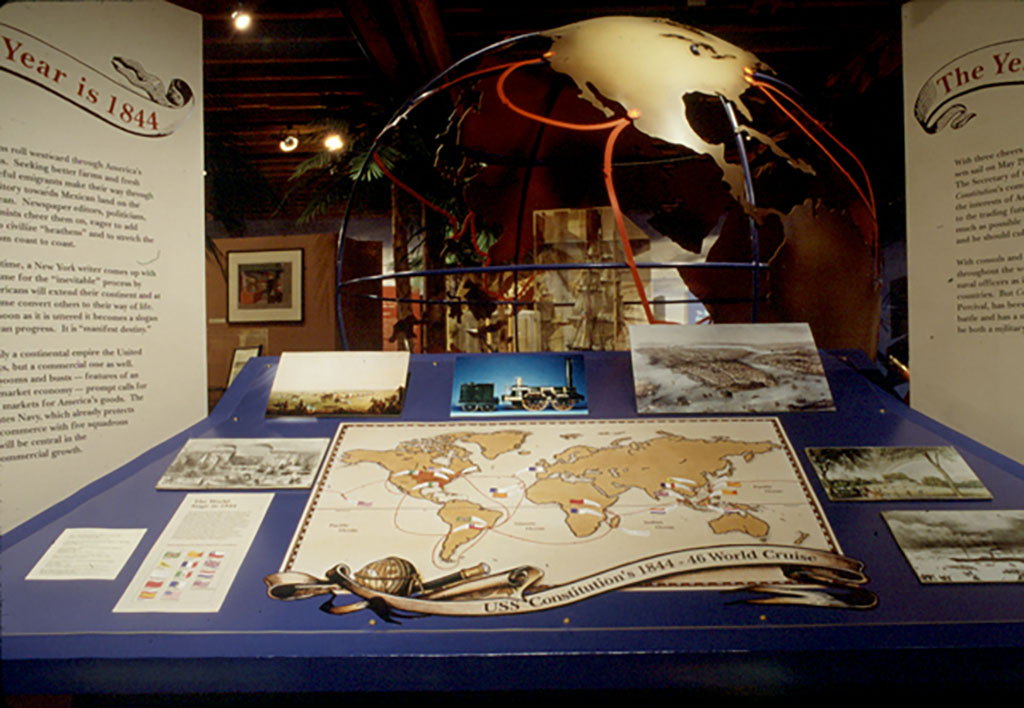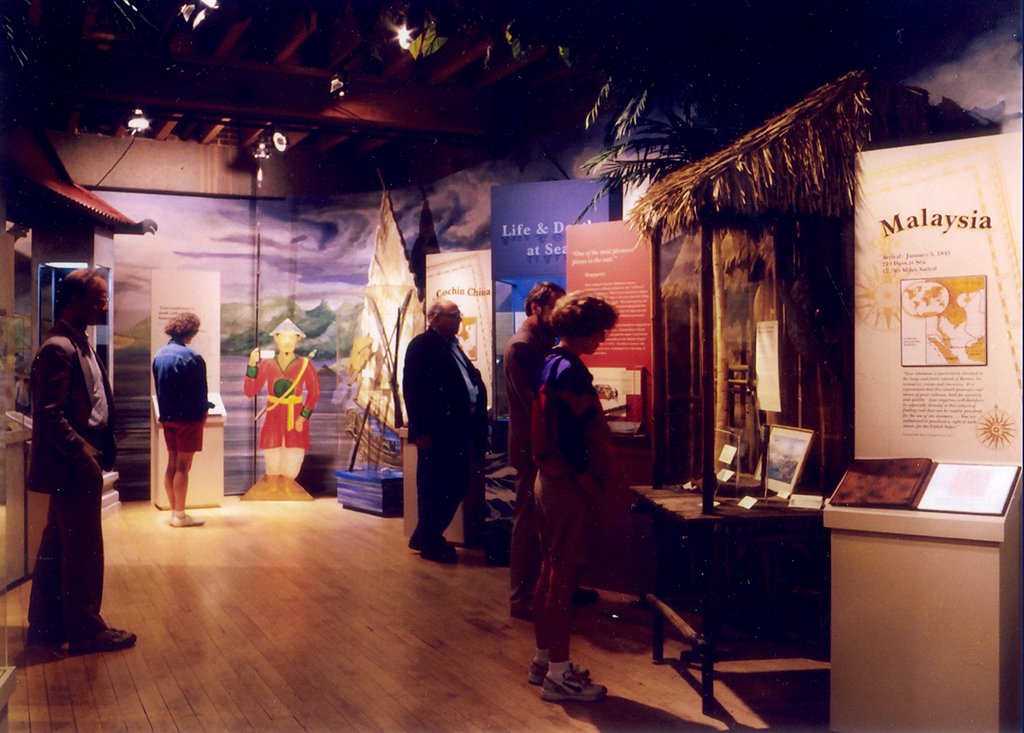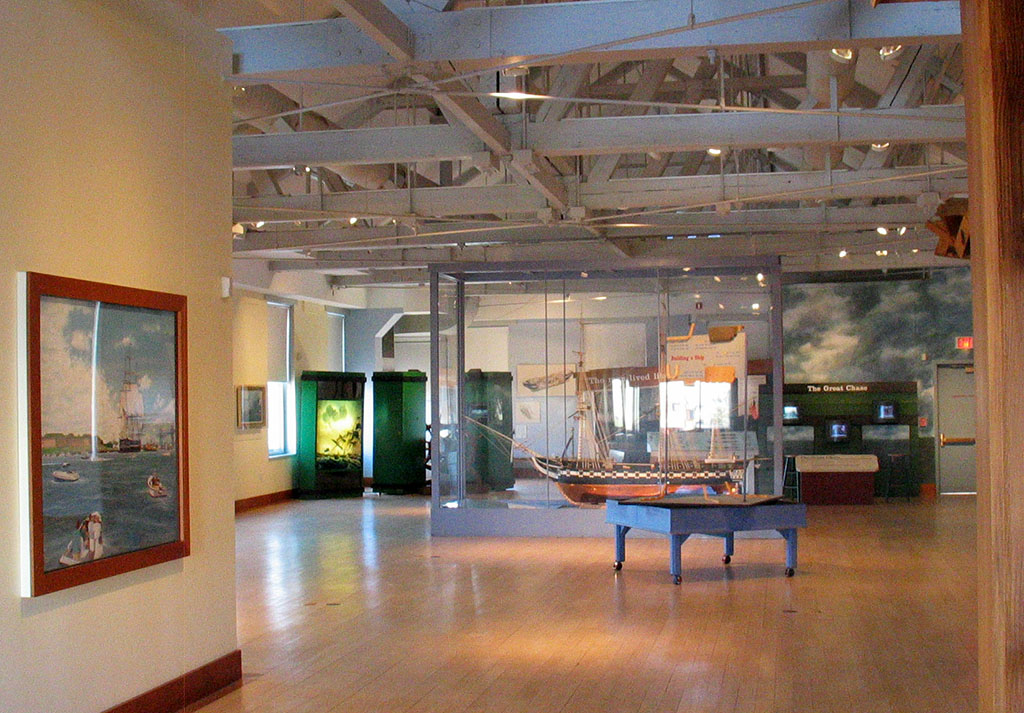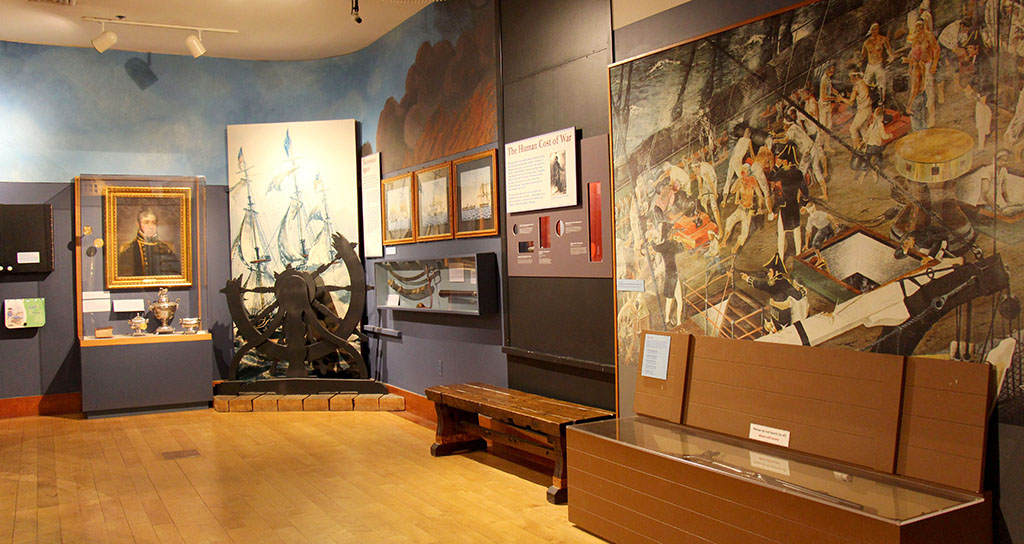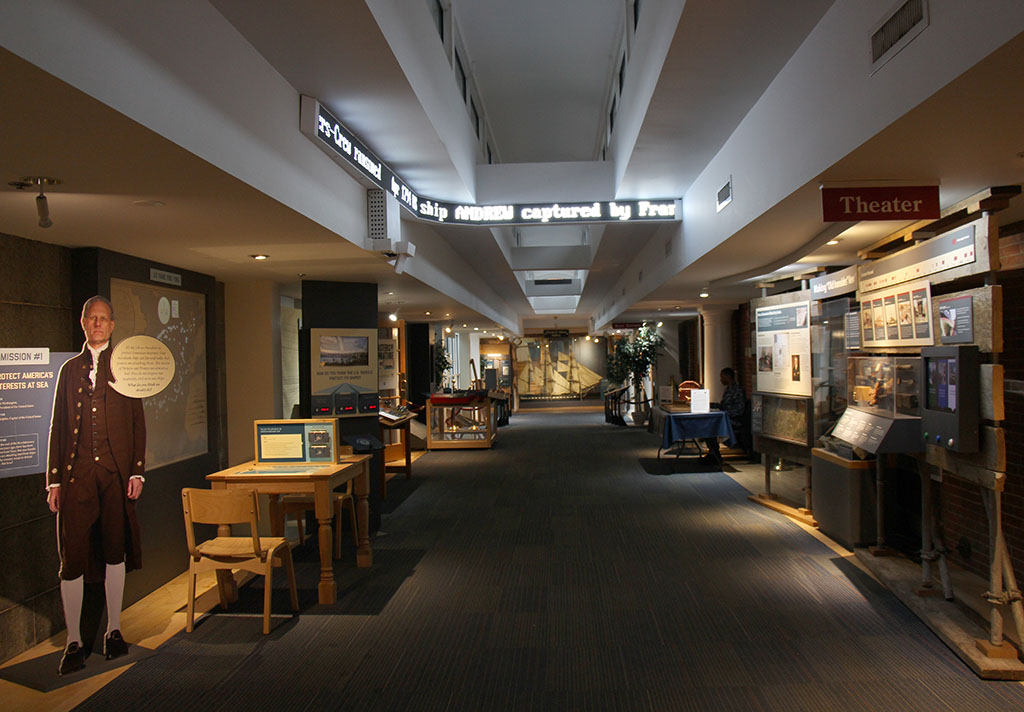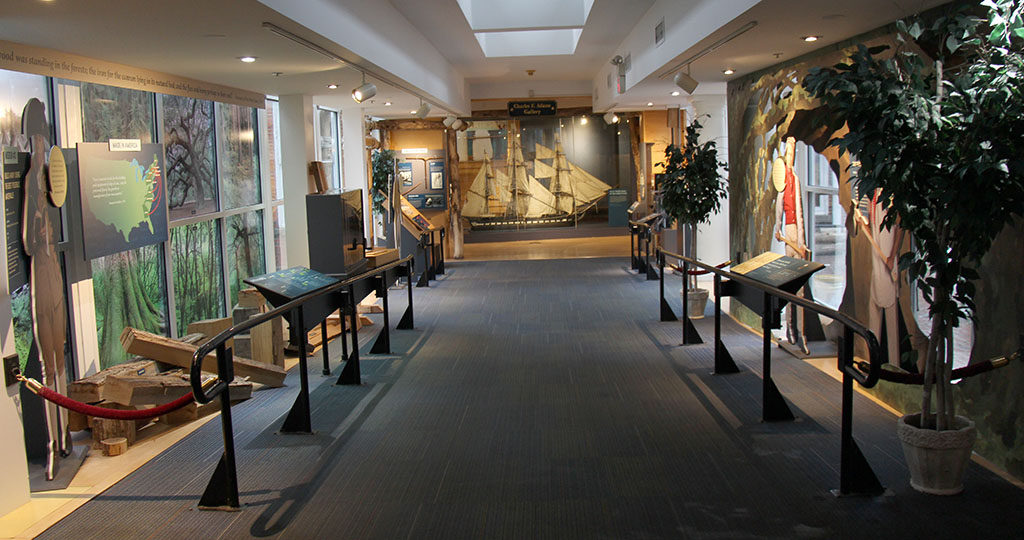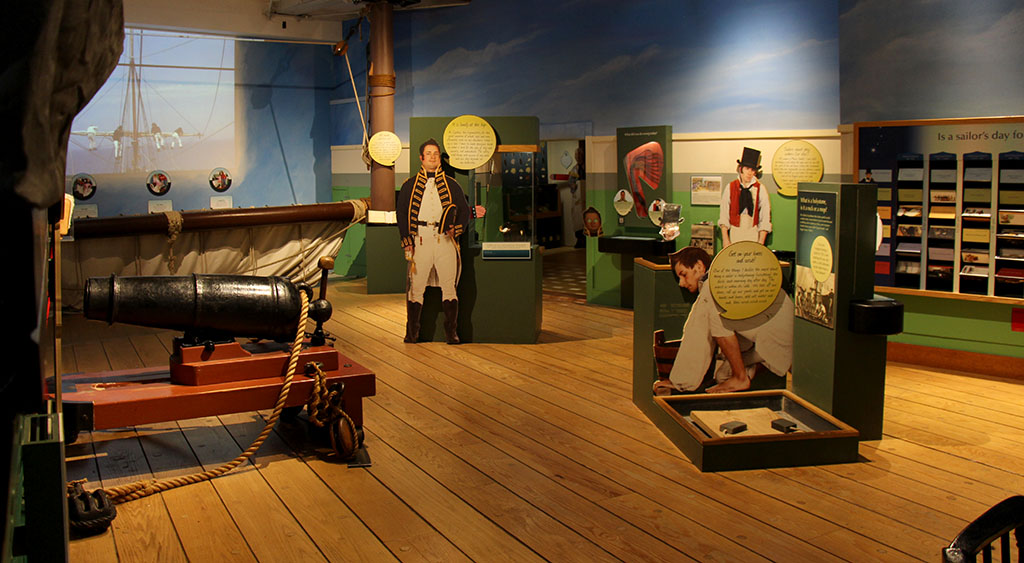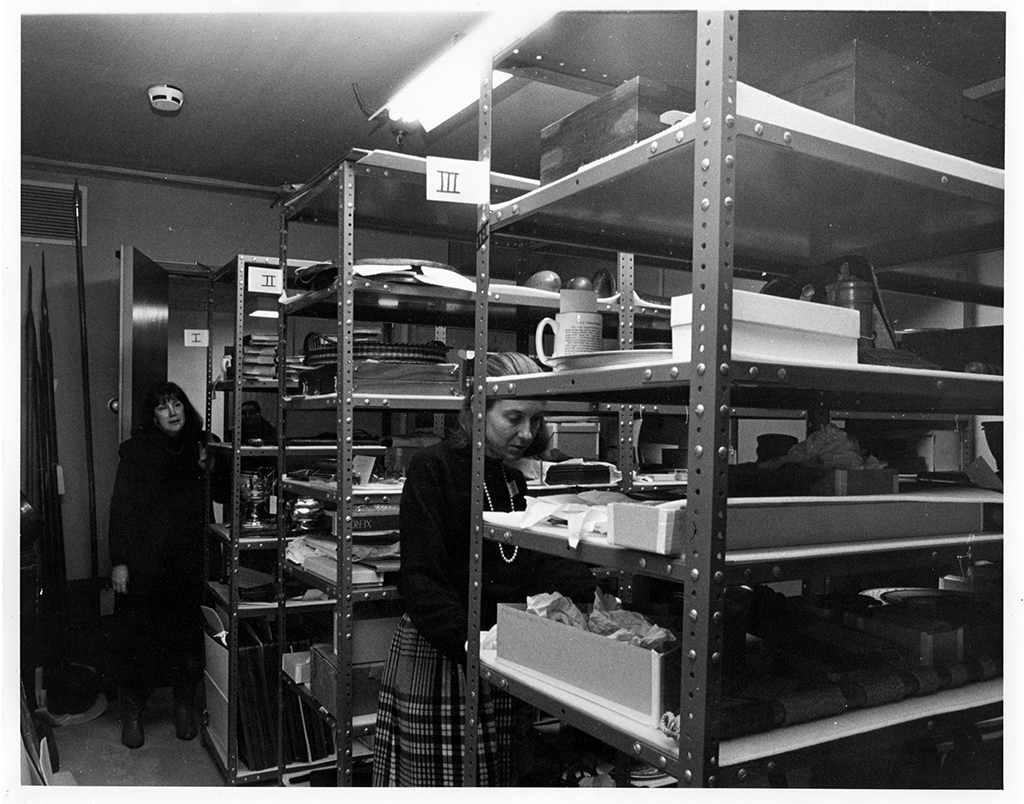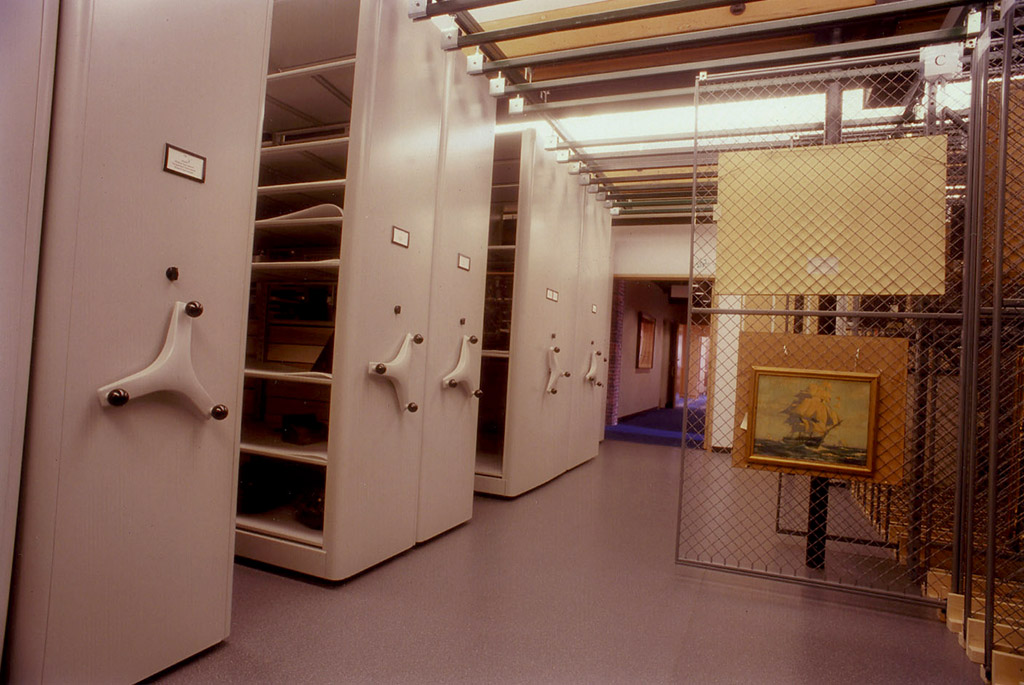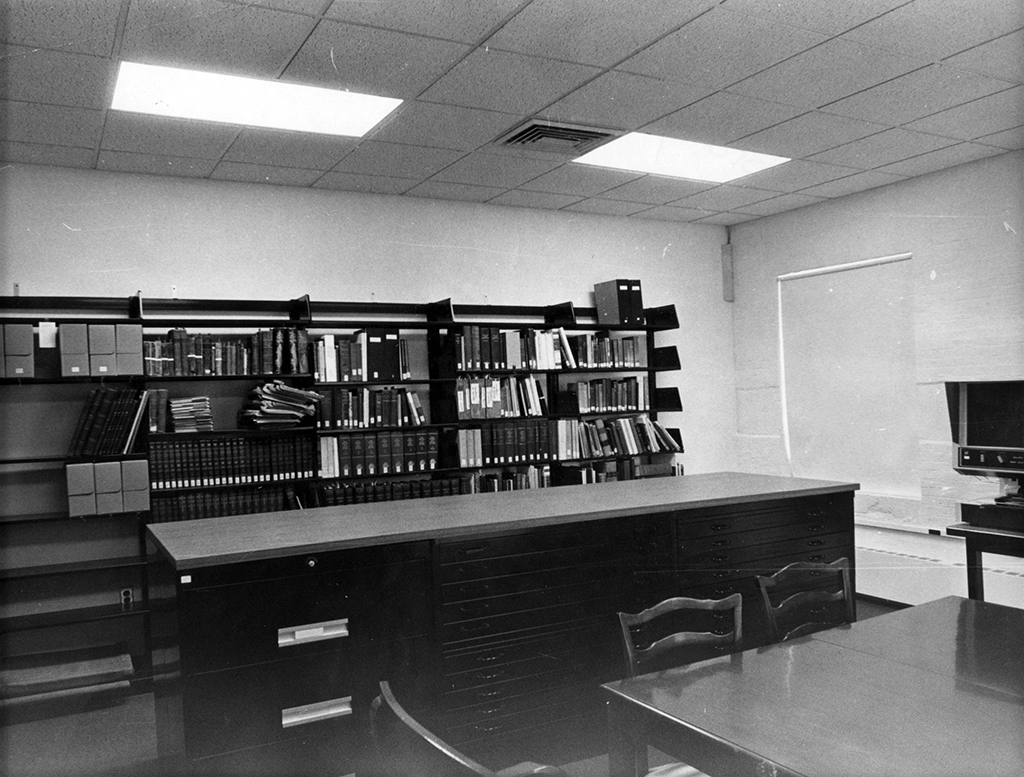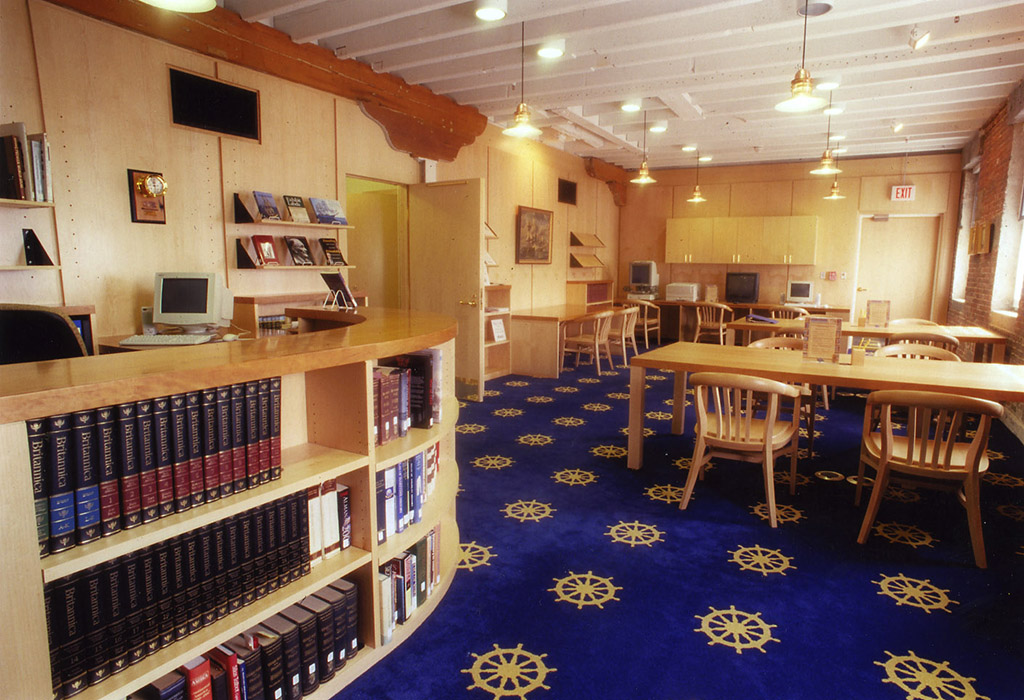Part I of “An Engine House Becomes a Museum” discusses the original use of Building 22 as the engine house, or pump house, for the Charlestown Navy Yard’s first dry dock. We pick up the story of this iconic building in the last quarter of the 20th century, when the renovated building became the USS Constitution Museum. Rear Admiral Samuel Eliot Morison, renowned maritime and U.S. Navy scholar, formally opened the Museum on April 8, 1976.
![Rear Admiral Samuel Eliot Morison cuts the rope to officially open the USS Constitution Museum. [Courtesy USS Constitution Museum]](/wp-content/uploads/2016/11/7021_1510-1024x702.jpg)
Since 1976, the USS Constitution Museum has told the stories of “Old Ironsides” through immersive and hands-on exhibits. Displays such as A Look Below the Waterline explained the ship’s construction.Constitution‘s remarkable escape from the British Squadron in July 1812 was exhibited in The Great Chase interactive. The Life at Sea exhibit was a favorite for many years as it brought to life the daily routines of the officers and men who sailed in 1812. As part of that exhibit, visitors could swing in a hammock or steer Constitution’s double steering wheel. The Around the World Aboard “Old Ironsides” exhibit allowed visitors to voyage to Mozambique, Madagascar, the floating cities of Borneo, and the sun-baked desert of Mazatlan, Mexico.
Much of the artifacts on display at the Museum’s opening were those artifacts displayed aboard USS Constitution from the time of the ship’s National Cruise of 1931 to 1934. Today, the Museum’s collection has grown to nearly 2,000 artifacts and over 9,700 archival records in what is now the most comprehensive collection of material related to “Old Ironsides.”
To facilitate access to these materials, the Museum shares collection highlights online, and collaborates with Digital Commonwealth and the Internet Archive to provide expanded access to the Museum’s War of 1812 collection.
Exhibits aboard USS Constitution before the founding of the USS Constitution Museum.
Exhibits at the USS Constitution Museum from the 1970s to today.
In the autumn of 1993, the USS Constitution Museum embarked on an ambitious plan to add more historic buildings to its complex, thereby enlarging the exhibition, collections storage, and administration areas. In 1994, the Museum opened a one-story glass corridor which was built to link Building 22 to the brick boiler house on the north and east sides of the former engine house. The boiler house had become an electrical power substation by the mid-20th century and all of the electrical switching units had to be removed in order to create the Museum’s first, purpose-designed theatre.
In 1995, the Museum began the second phase of its expansion by opening up Building 28 to the glass corridor. Between 1995 and 1996, Building 28, built in the 1850s to store coal for the boilers of Building 22, became the Museum’s new exhibition halls. When the renovations of Building 28 began, it became apparent that two-thirds of the building’s back wall would have to be re-built, repairing decades-old damage from a traveling crane that had hit the building. In the summer of 1996, the USS Constitution Museum cut the ribbon on Building 28 and inaugurated the exhibit “Old Ironsides” in War & Peace, a sweeping 200-year retrospective of the ship’s history. This exhibit helped to usher in the 200th anniversary commemorations of USS Constitution’s 1797 launch.
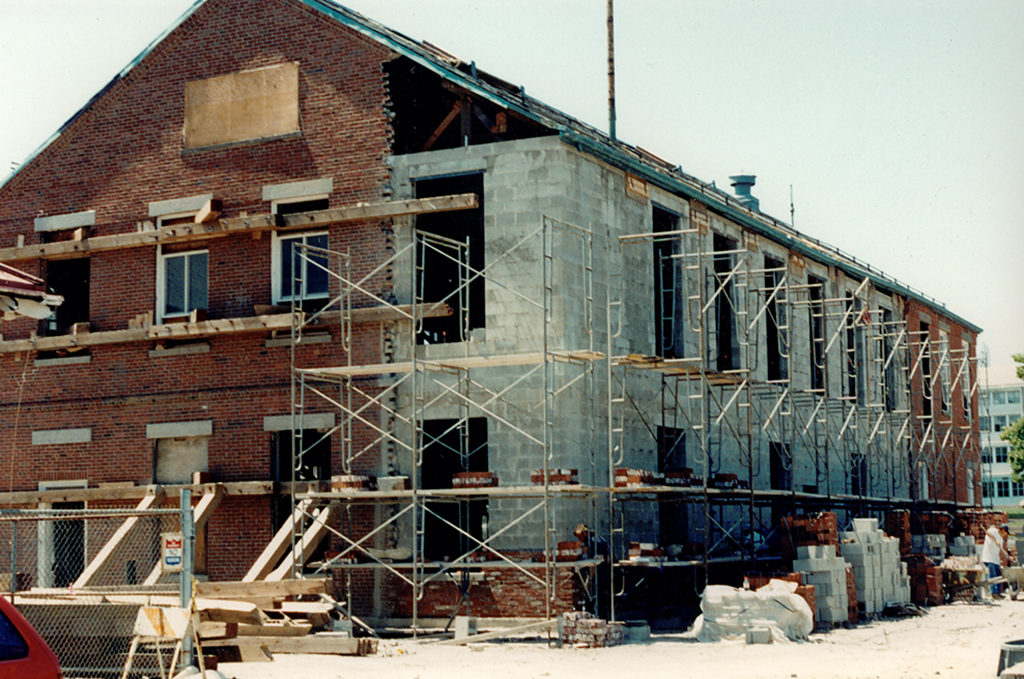
The USS Constitution Museum began its third expansion phase in late 1999, when the second floor exhibit galleries in Building 22 were closed. The whole floor was renovated to become the Museum’s collections storage, library and archives, reading room, and offices of the Curatorial Department. For the first time in its history, the Museum was able to provide state-of-the art, purpose-built compact storage for its growing collections of artifacts, rare books, and manuscripts. The Samuel Eliot Morison Memorial Library, named in honor of RADM Morison, opened in 2000. The library has welcomed scholars from around the world who have come to research “Old Ironsides” and the early United States Navy.
Original collections storage and library and the new facilities which opened in 2000.
The summer of 2016 marked the 40th anniversary of the USS Constitution Museum in Building 22, the 1832 Alexander Parris-designed “Engine House.” The glass corridor linking the buildings is currently home to Making “Old Ironsides” New, an exhibit on the 2015 – 2017 dry docking and restoration of Constitution. The corridor also showcases the newest semi-permanent exhibit, Forest to Frigate, which opened in July 2016 and details the stories of the people and materials that created Constitution and the new United States Navy.
In 1833, USS Constitution was the first vessel to enter Dry Dock 1, and the nearby Engine House and its equipment pumped the water from the dock. Who could have predicted that 183 years later, the same dock would shelter “Old Ironsides” for her first 21st century restoration. Or, that the Engine House would have become the USS Constitution Museum, the “memory and educational voice of [the ship]…collecting, preserving, and interpreting the stories of ‘Old Ironsides’ and the people associated with her.”
![40th Anniversary Celebration of the opening of the Museum. [USS Constitution Museum]](/wp-content/uploads/2016/11/USSCM_148_9429_160630-1024x683.jpg)
The activity that is the subject of this blog article has been financed in part with Federal funds from the National Maritime Heritage Grant program, administered by the National Park Service, U.S. Department of the Interior, through the Massachusetts Historical Commission, Secretary of the Commonwealth William Francis Galvin, Chairman. However, the contents and opinions do not necessarily reflect the views or policies of the Department of the Interior, or the Massachusetts Historical Commission, nor does the mention of trade names or commercial products constitute endorsement or recommendation by the Department of the Interior, or the Massachusetts Historical Commission.
The Author(s)
Margherita Desy, Historian, Naval History and Heritage Command Detachment Boston
Historian, Naval History and Heritage Command
Margherita M. Desy is the Historian for USS Constitution at Naval History and Heritage Command Detachment Boston.
Phaedra Scott
Content Developer, USS Constitution Museum
Phaedra Scott was the Content Developer at the USS Constitution Museum from 2016 to 2017.
